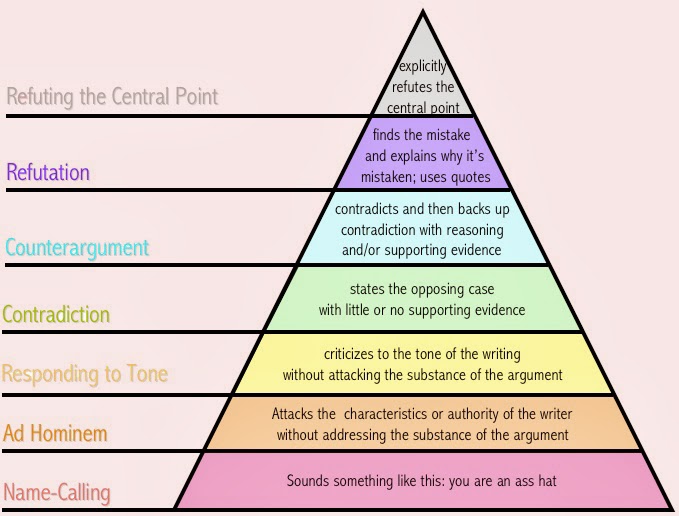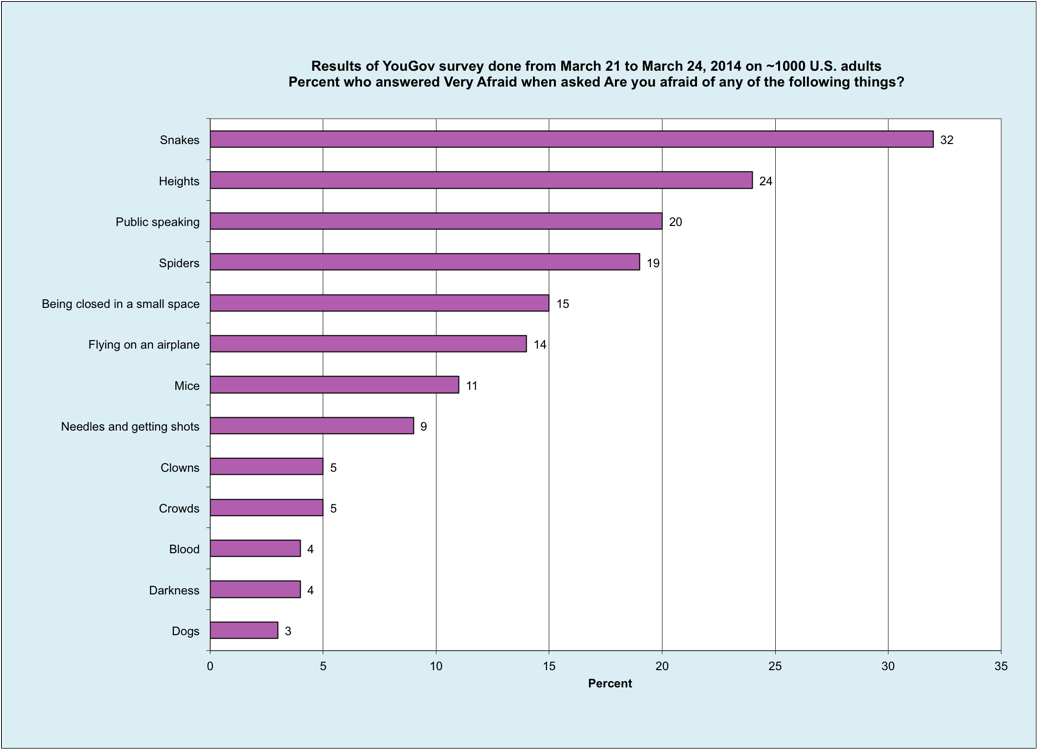On March 20, 2014 YouGov plc posted an article by William Jordan titled Afraid of Heights? You’re Not Alone with the results of their fears survey just done in Britain on a sample of 2088 adults (1075 women and 1013 men). Those people were asked about the following 13 different fearful situations:
Being in a closed space
Blood
Clowns,
Crowds
Darkness
Dogs
Flying in an airplane
Heights
Mice
Needles and getting shots
Public speaking
Snakes
Spiders
They were asked if they were:
A) Not afraid at all
B) Not really afraid
C) A little afraid
D) Very afraid
Results for Very Afraid are shown above in a bar chart. (Click on it for a larger, clearer view). The top five fears are:
Heights (23%)
Snakes (21%)
Public speaking (20%)
Spiders (18%)
Being closed in a small space (14%)
For Very Afraid, women and men have rather different fears, as shown above in a second bar chart. For women the top five fears are:
Snakes (28%)
Public speaking (27%)
Heights (26%)
Spiders (25%)
Being closed in a small space (19%)
For men the top five fears [and difference re women] are:
Heights (21%) [-5]
Snakes (14%) [ -14]
Public speaking (13%) [-14]
Spiders (12%) [-13]
Being closed in a small space (10%) [-9 ]
Heights came in first, followed by snakes. Note that public speaking came in third overall, and second for both women and men, contradicting the often seen claim that it always ranks first. At least twice as many women as men were scared of snakes, public speaking, spiders, mice, and darkness.
Results for A Little Afraid are shown above in a third bar chart. The top five fears are:
Public speaking (36%)
Heights (35%)
Snakes (31%)
Being closed in a small space (29%)
Spiders (24%)
Heights and Public speaking, tied (37%)
Being closed in a small space (33%)
Snakes (28%)
Spiders (27%)
Crowds and Mice, tied (22%)
For men the top five fears [and difference re women] are:
Public speaking (35%) [-2]
Snakes (34%) [6]
Heights (33%) [-4]
Being closed in a small space (24%) [-9 ]
Spiders (21%) [-6]
At least twice as many women as men were scared of crowds, mice, and darkness.
Heights (58%)
Public speaking (56%)
Snakes (52%)
Being closed in a small space (43%)
Spiders (42%)
For Total Afraid, women and men also have rather different fears, as shown above in a sixth bar chart. For women the top five fears are:
Public speaking (64%)
Heights (63%)
Snakes (56%)
Being closed in a small space and Spiders, a tie (52%)
Mice (34%)
For men the top five fears [and difference re women] are:
Heights (54%) [-9]
Public speaking and Snakes, a tie (48%) [-16 and -8]
Being closed in a small space (34%) [-18 ]
Spiders (33%) [-19]
Needles and getting shots (26%) [2]
At least twice as many women as men were scared of mice, and darkness. As the article noted, the largest gender difference [19%] was for Spiders, a third (33%) for men versus more than half (52%) for women.
The article presented just one stacked bar chart with overall percentages, but provided a link to tables with detailed results. I’ve just discussed gender, but also could have shown age and geographical region.
The image of a high London Eye Ferris wheel cabin is from Wikimedia Commons.







































